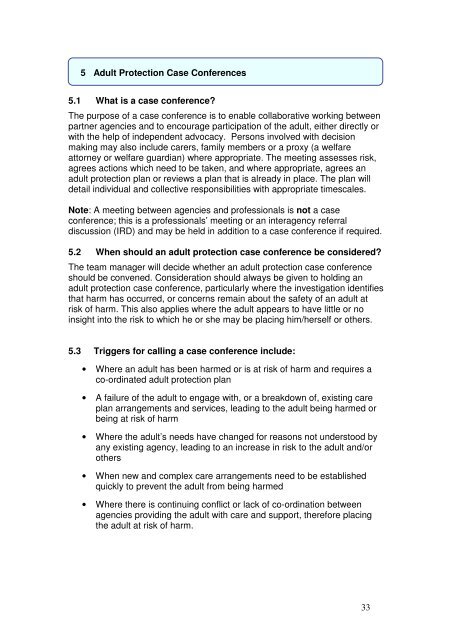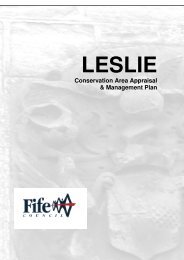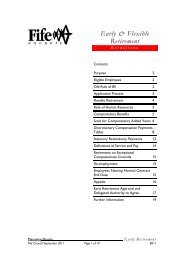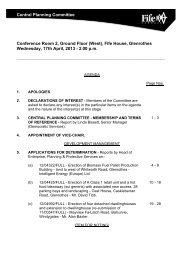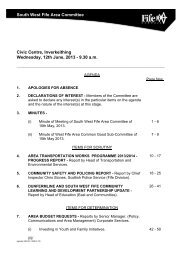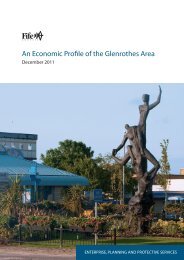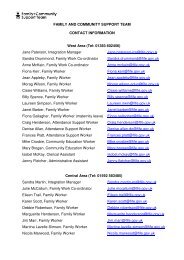Fife Multi-Agency Adult Protection Guidance - Home Page
Fife Multi-Agency Adult Protection Guidance - Home Page
Fife Multi-Agency Adult Protection Guidance - Home Page
You also want an ePaper? Increase the reach of your titles
YUMPU automatically turns print PDFs into web optimized ePapers that Google loves.
5 <strong>Adult</strong> <strong>Protection</strong> Case Conferences5.1 What is a case conference?The purpose of a case conference is to enable collaborative working betweenpartner agencies and to encourage participation of the adult, either directly orwith the help of independent advocacy. Persons involved with decisionmaking may also include carers, family members or a proxy (a welfareattorney or welfare guardian) where appropriate. The meeting assesses risk,agrees actions which need to be taken, and where appropriate, agrees anadult protection plan or reviews a plan that is already in place. The plan willdetail individual and collective responsibilities with appropriate timescales.Note: A meeting between agencies and professionals is not a caseconference; this is a professionals’ meeting or an interagency referraldiscussion (IRD) and may be held in addition to a case conference if required.5.2 When should an adult protection case conference be considered?The team manager will decide whether an adult protection case conferenceshould be convened. Consideration should always be given to holding anadult protection case conference, particularly where the investigation identifiesthat harm has occurred, or concerns remain about the safety of an adult atrisk of harm. This also applies where the adult appears to have little or noinsight into the risk to which he or she may be placing him/herself or others.5.3 Triggers for calling a case conference include:• Where an adult has been harmed or is at risk of harm and requires aco-ordinated adult protection plan• A failure of the adult to engage with, or a breakdown of, existing careplan arrangements and services, leading to the adult being harmed orbeing at risk of harm• Where the adult’s needs have changed for reasons not understood byany existing agency, leading to an increase in risk to the adult and/orothers• When new and complex care arrangements need to be establishedquickly to prevent the adult from being harmed• Where there is continuing conflict or lack of co-ordination betweenagencies providing the adult with care and support, therefore placingthe adult at risk of harm.33


